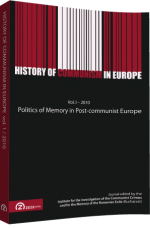The Black Hole Paradigm. Exhibiting Communism in Post-Communist Romania
The Black Hole Paradigm. Exhibiting Communism in Post-Communist Romania
Author(s): Simina BădicăSubject(s): History
Published by: Zeta Books
Keywords: museum; representations of communism; Sighet Memorial Museum; Romanian Peasant Museum
Summary/Abstract: In the early 1990s, Romania’s communist past was a subject of heated public and private debate in which the historian’s voice was hardly ever heard. It was the time when metaphorical accounts of the country’s difficult past were more fashionable than serious academic analysis. It was in the 1990s that the 1945-1989 period came to be described as “a black hole” in Romania’s history, as a time when Romanians were “out of history”. My argument is that Romanian exhibitions on communism have taken up this unfortunate metaphor and, although academic accounts of our recent past are currently more nuanced, the practice of exhibiting communism has remained confined to these old-fashioned dichotomies and to what I describe as the black hole paradigm. My article will mainly deal with two important museums, the only ones that had the determination and courage to establish, in the troubled 1990s, permanent exhibitions dealing with the country’s communist past. The Sighet Memorial Museum and the Romanian Peasant Museum are to this day still the only museums that exhibit communism every day from 10 a.m. to 6 p.m. Yet they were constructed in a specific memorial context. The influence of this is visible in the curatorial concept of the exhibitions, in their usage of space and architecture and in the basic argument they strive to convey about the communist past.
Journal: History of Communism in Europe
- Issue Year: 2010
- Issue No: 1
- Page Range: 83-101
- Page Count: 19
- Language: English
- Content File-PDF

